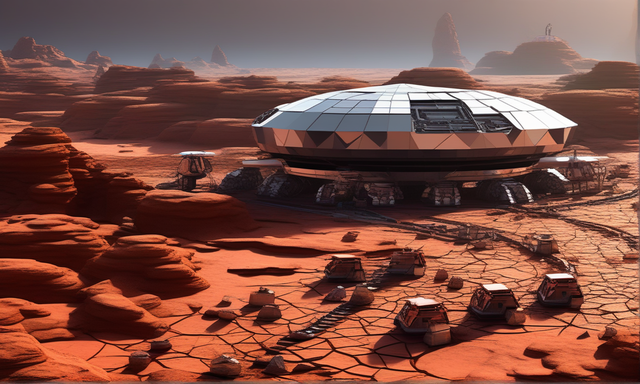Chinese rover finds structures on Mars.
Chinese rover finds structures on Mars.

It has recently caused excitement in the media and the Chinese Zhurong Rover has detected underground structures on Mars and that sounds a bit shocking and scientifically it is shocking, although it is not the type of structure as some think, buried cities or hidden pyramids, no. , but for a scientist what the Chinese have found is very interesting.

Souce
This plain is located in the north in the northern hemisphere of the planet, this Martian region is very special, as its name indicates it is a low plain, it is the largest impact basin on Mars and also the largest in the solar system. A diameter of 3300 km, it was formed billions of years ago during the origins of the planet and has a depth of about 3 km below the average Mars.

Souce
A little smaller in size is another plain, but very interesting, I bring it up because although it is in the southern hemisphere, it is the Hellas plain, it is 2300 km in diameter, it is a little smaller as it is a little smaller in relation to The previous plain was also the product of the impact of a giant asteroid or perhaps even a protoplanet and is very deep, the difference in altitude between the edge and the bottom is more than 9 km, in fact, the depth of the crater is 7152 m below the mean pressure point of the Planet.

The last lake must have been in that plain of utopia or in that of Hellas. and if one day we manage to make the Martian atmosphere denser, those places will be the first where water, rivers and lakes emerge again, and they will be the first that can be habitable, so what Robert Zhurong was exploring was the bed of an ancient Martian sea, but it lost its water when Mars stopped having a dense atmosphere, well that is what is extraordinary about the Chinese discovery, according to the data it did not lose all of it and those polygonal wedges according to Chinese researchers are a clue that that water It was the one that, when freezing and thawing between 3,700 and 2,000 million years ago, created those strange structures.
Thank you for visiting my blog. If you like posts about #science, #planet, #politics, #rights #crypto, #traveling and discovering secrets and beauties of the #universe, feel free to Follow me as these are the topics I write about the most. Have a wonderful day and stay on this great platform :) :)
! The truth will set us free and science is the one that is closest to the truth!
0
0
0.000
Thanks for your contribution to the STEMsocial community. Feel free to join us on discord to get to know the rest of us!
Please consider delegating to the @stemsocial account (85% of the curation rewards are returned).
You may also include @stemsocial as a beneficiary of the rewards of this post to get a stronger support.